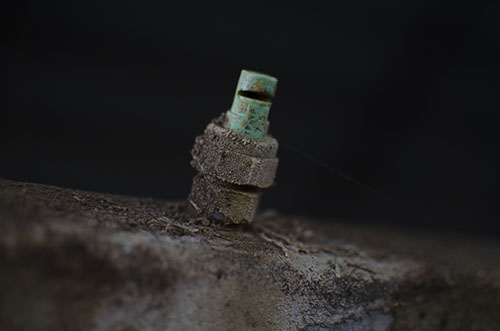
With full bunkers and only a few remaining harvest tasks to check off the list, the warmth of summer may be the last thing on your mind. Or, maybe you're already dreaming of the warmer days we'll see next year. Either way, your cows are certainly thankful that the heat has dissipated.
Cows begin to experience heat stress at a THI (temperature-humidity index) of 68. This value is reached when the temperature hits 80°F with little to no humidity or when it approaches 72°F at 45 percent humidity.
Fans or sprinklers over the feedbunk are commonly employed to get cows over the heat stress hump. And few states know heat stress like California.
Researchers from the University of California, Davis, studied how sprinkler flow rate and droplet size affect physiological measures of heat load in a hot, dry climate. The second objective of their study was to evaluate cooling effectiveness against water use.
The treatments compared an unsprayed control and six soaker nozzles that delivered four, three-minute spray applications of 0.1, 0.3 or more than a gallon of water per minute. Two droplet sizes were used within each flow rate treatment. These conditions resulted in 30 to 47 percent of spray directly wetting each cow.
Data were collected from 19 high-producing Holsteins. Cows were restrained in headlocks for one hour and were exposed to one treatment per day for three days each. The average air temperature was 88°F.
When cows were not sprayed, physiological measures of heat load rose during the one-hour treatment.
All measures, though, responded rapidly to spray. Skin temperature was reduced during the first water application. Respiration rate and body temperature dipped before the second application. Droplet size had no effect on cooling, but the authors noted that flow rate affected several measures.
At the end of one hour, a flow rate of 0.1 gallon per minute resulted in a lower respiration rate and skin temperature on directly sprayed body parts relative to the control but not baseline values. Meanwhile, core body temperature rose slightly above baseline levels.
When 0.3 or 1 gallon of water per minute was applied, respiration rates were lower than the control and dropped relative to each cow's baseline. Body temperature also stayed below baseline for at least 30 minutes after the treatment ended.
The treatment that best balanced cooling effectiveness against water usage was 0.3 gallon per minute. Above that level, the additional physiological benefits were relatively minor.
As summer heat becomes a distant memory, and winter's cooler temperatures settle in, heat stress might be the last thing on your mind. But, with the less hectic schedule winter often brings, it may be the perfect time to address next year's cow cooling needs.

The author is an associate editor and an animal science graduate of Cornell University. Smith covers feeding, milk quality and heads up the World Dairy Expo Supplement. She grew up on a Medina, N.Y., dairy, and interned at a 1,700-cow western New York dairy, a large New York calf and heifer farm, and studied in New Zealand for one semester.








